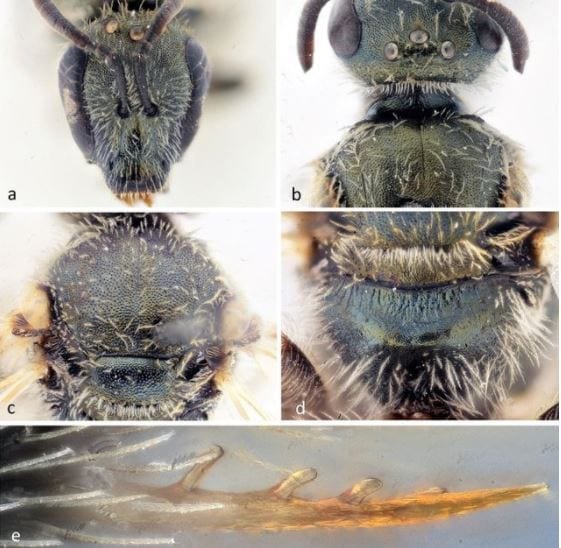The world’s population and the plants that feed it couldn’t survive without bees, especially those that have been domesticated (Apis mellifera) and settle in hives. There is no overestimating the importance of pollinators, but in recent decades, the numbers of domesticated bees have declined in significant numbers due to climate changes, insect diseases and pollution.


While crop pollination relies mainly on managed colonies of the domesticated honey bee, wild and unmanaged pollinators have been found to be highly effective, often critical contributors to pollination services in natural and agricultural systems. Among these wild pollinators, native bees are the most important pollinator group
Recognizing their importance, researchers at the Hebrew University of Jerusalem were excited recently when they discovered a new bee species in Israel’s Sharon (Coastal Plain) region, particularly in light of decreases in pollinator populations, most notably bees, in many parts of the world.
Therefore, biologists have placed habitat preservation and restoration as one of the key tools in protecting pollinators and biodiversity as a whole. In the process of ongoing studies on how to conserve such habitats currently ongoing in the Sharon region, researchers were surprised to discover a previously unknown wild bee species populating sand dunes in the area. The discovery was recently published in the Belgian Journal of Entomology under the title: “Lasioglossum dorchini (Hymenoptera: Apoidea: Halictidae) – a new species of bee from Israel.”

The Israeli study focused on the impact of restoration activities of a threatened sand ecosystem along the coastal plains. Large-scale eucalyptus plantings that took place in this region in the last decade caused dramatic changes in habitat characteristics and decreased local biodiversity. Led by Prof. Yael Mandelik and doctoral candidate Karmit Levy from the university’s entomology department in the Faculty of Agriculture, Food and Environment, the team have spent the past five years studying the effect of these restoration activities and specifically how they affect the local bee population.
The shortcode is missing a valid Donation Form ID attribute.
Using a variety of classical methods for surveying insects and plants, the team found reasons for optimism in the gradual change following restoration actions. “We observed changes in bee communities and in the availability of their food and nesting resources in the restored habitats. In general, we can see that restoration efforts have positive effects on bee communities” explained Levy.
Alongside these optimistic findings, the researchers recorded another exciting discovery – a new species of bee that had never before been recorded and that is believed to be unique to sand dunes found on Israel’s coastal plains. The species identified and described by Dr. Alain Pauly, a taxonomist (classifier of species) from the Royal Belgian Institute of Natural Sciences in Brussels. The name chosen for the species was Lasioglossum dorchini in tribute to the Israeli bee researcher Dr. Achik Dorchin of the Steinhardt Museum of Natural History at Tel Aviv University.
The new species has been recently discovered in bee surveys in Nahal Alexander National Park in the central coastal Plain where it is the most common Halictid species collected in pan traps (colored bowls containing soapy water). A total of 475 specimens were examined. The female is six millimeters in length, with an elongated head, a body with metallic bronze-green reflections, the front legs black and the end of the femurs and half of the hind legs brown.
“Beyond just the professional excitement of discovering a new species that was previously unknown to science, this finding has broader applicative value in helping us better understand bee communities, their habitat requirements and the pollination services they may provide,” Mandelik said.



